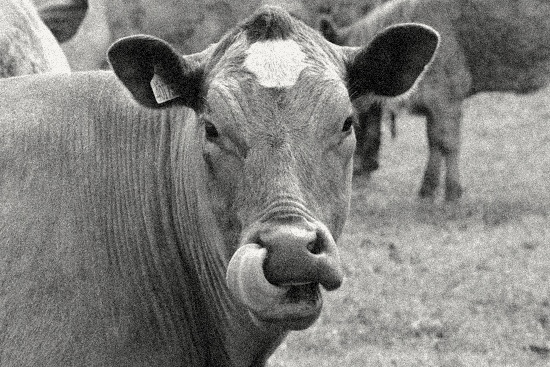Civil War: The Great Beefsteak Raid
Beards, beef, and bandits–150 years ago this week.

It was September 1864 and the Confederate army defending Petersburg was perilously low on food.
Compared to the bustling Union army supply operation at City Point, the Confederate army, under General Robert E. Lee, was running out of ways to get rations, supplies, and reinforcements to Petersburg. Since the siege of Petersburg began in June, Union Gen. Ulysses S. Grant had spent the summer steadily encroaching further west around the southern side of the city, in order to cut off the few remaining supply routes and railroads Lee still had access to. In August, the Federals captured a portion of the Weldon railroad line to North Carolina, leaving only the Southside railroad line to Lynchburg available to Lee.
Even while being choked off from the west and facing a vastly larger force to the east, the Confederates found ways to go on the offensive. On September 5th, 1864, a Confederate scout returned from a reconnaissance mission to survey Union defenses to the east of Petersburg. The scout, George D. Shadburn, believed he had found a vulnerability and reported it the head of Lee’s cavalry, Gen. Wade Hampton. Shadburn told Hampton about a herd of 3,000 cattle that were being kept at a placed called Coggin’s Point, just a few miles away from the Union base at City Point. The farm was poorly-defended by less than 150 soldiers and presented a prime opportunity, but it was 100 miles deep into Union territory–a risky move at best.
Lee had placed Hampton in command of the Cavalry Corps after the death of the infamous Gen. J.E.B. Stuart at the Battle of Yellow Tavern. After being on the job for a few months, Hampton may have been looking for a chance to replicate his predecessor’s success at making cavalry raids deep in Union territory.1 He jumped at the opportunity.
On the morning of September 14th, Hampton embarked on his raid with 4,000 soldiers. They traveled around the south side of Petersburg for two days undetected, stopping only to repair a bridge on the Blackwater River in order to reach Coggin’s Point. The bridge, which had previously been destroyed by Union forces, made for an unexpected route for their surprise raid. At midnight on the 15th, Hampton found himself only 10 miles away from his destination and still unseen by Union forces. He split his force into three distinct parts. Two parts would cut off any potential reinforcements from the east or the west, and the third part would head straight for the cattle. At 5:00 AM on September 16th, the raid commenced and despite the Federals best attempt to hold them off, the Confederates parted with 2,486 cattle and 304 Yankee prisoners.
Of course, stealing the cattle was one thing – getting them back across enemy lines was another. Fortunately for the Confederates, the few run-ins they had with Union troops on the way back did little to impede their progress. On September 17th, Hampton arrived back behind Confederate lines with the herd. Surprisingly, he only lost 18 cows along the way and only 10 of his soldiers were killed in the surprise raid. Grant, who was in the Shenandoah Valley at the time of the attack, was clearly frustrated by the cattle theft. When a visitor to his headquarters asked him when he thought they’d be able to end the siege of Petersburg and drive Lee into surrender, he replied “Never, if our armies continue to supply him with beef cattle.”
Despite the success of the raid, the Confederacy was ill-equipped for their new prize. Having no grain to feed the cattle and no real way to preserve meat, they were forced to slaughter the entire herd. For days, the rebel army at Petersburg enjoyed abundant feasts of steak, taunting the Union soldiers across the trench lines, thanking them for their generosity and inviting them over for dinner. It’s safe to say that the entire Confederate line at Petersburg probably smelled like one big cookout.
A few days later, all the meat had been eaten or spoiled and the Confederates returned to their previous state of famine in short order. For many, the Beefsteak Raid provided them with the last good meal they’d have until the end of the war.
Photo by: Box Brownie Brian
- While Hampton may not have reached the fame of J.E.B. Stuart, it’s this author’s opinion that he did have an awesome beard that rivaled Stuart’s. ↩
-
Recommend this
on Facebook -

Report an error
-

Subscribe to our
Weekly Digest




There is 1 reader comment. Read it.